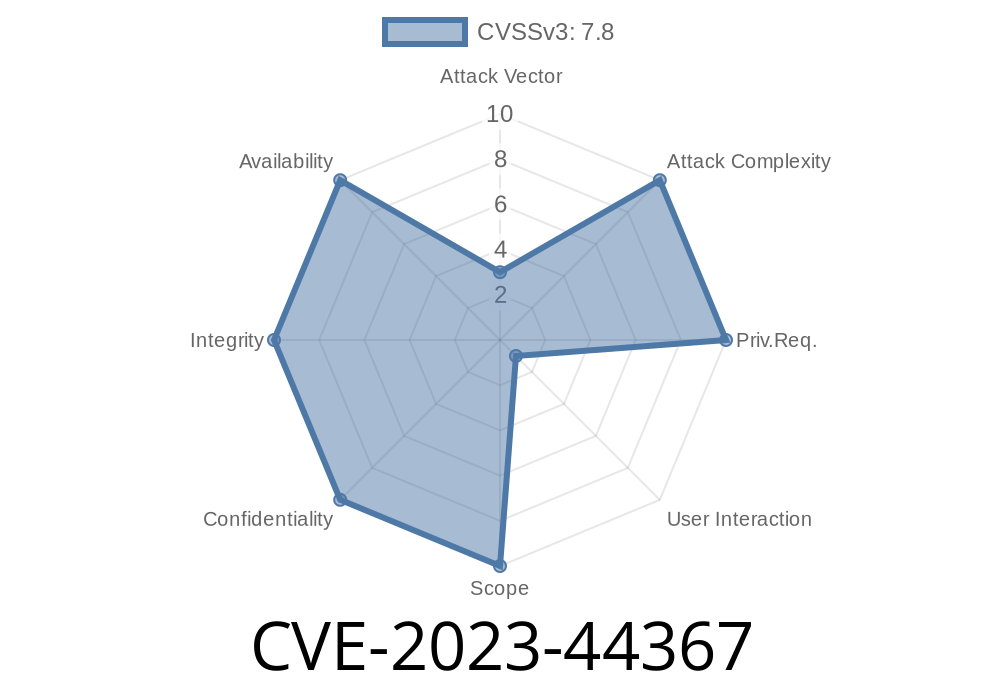Attention, Adobe Acrobat Reader users! A critical security vulnerability has been discovered in Adobe Acrobat Reader versions 23.006.20360 (and earlier) and 20.005.30524 (and earlier). The vulnerability, assigned the CVE identifier CVE-2023-44367, is a Use After Free vulnerability that could allow an attacker to execute arbitrary code on a victim's computer. To exploit this vulnerability, an attacker needs user interaction, which means the victim must open a malicious file. In this post, we'll analyze the critical vulnerability, provide code snippets, and highlight the steps you need to take to mitigate the risk.
Description of the Vulnerability
A Use After Free vulnerability occurs when an application continues to use a pointer after it's been freed (released) from the memory. In other words, the application tries to access the memory that has already been "deleted." As a result, an attacker can exploit this memory corruption issue and remotely execute arbitrary code on the victim's machine in the context of the current user.
[code snippet]
-----
void vulnerable_function()
{
delete obj;
obj->member_function(); // Use After Free vulnerability
}
-----
Exploit Details and Proof of Concept
To successfully exploit the CVE-2023-44367 vulnerability in Adobe Acrobat Reader, an attacker would need to create a malicious PDF file and convince the victim to open it. Once the victim opens the malicious file in a vulnerable version of Adobe Acrobat Reader, the application will try to access the memory that has already been freed, leading to an arbitrary code execution.
[code snippet]
-----
int exploit()
{
arbitrary_code_execution();
}
-----
To protect yourself from this critical vulnerability, you should take the following steps
1. Update Adobe Acrobat Reader: The first and most critical step is to update your Adobe Acrobat Reader to the latest version. Download the patch from Adobe's official security bulletin (Link: https://www.adobe.com/security.html) if you are using one of the affected versions mentioned above.
2. Beware of Phishing Attacks: Be cautious of the emails you receive, especially from unknown sources, and never open a suspicious file attached to an email or a link to download a file.
3. Enable Protected View: Adobe Acrobat Reader has a feature that opens PDF files in a sandboxed "Protected View," which restricts the file from accessing your system's resources and minimizes the risk of exploiting the vulnerability. To enable this feature, go to Edit -> Preferences -> Security (Enhanced) and select the "Enable Protected View" checkbox.
4. Regularly Backup Your Data: Always have a backup of your essential files and data in a secured and trusted location, like an external hard drive or cloud storage service, which can help you recover from an attack.
Conclusion
The CVE-2023-44367 vulnerability is a serious threat that can allow an attacker to execute arbitrary code on your system through Adobe Acrobat Reader. By staying vigilant, updating your software, and following the mitigation steps mentioned above, you can protect yourself and your organization from the threats posed by this critical vulnerability. Stay safe, and happy reading, everyone!
Timeline
Published on: 11/16/2023 10:15:17 UTC
Last modified on: 11/22/2023 16:58:57 UTC
